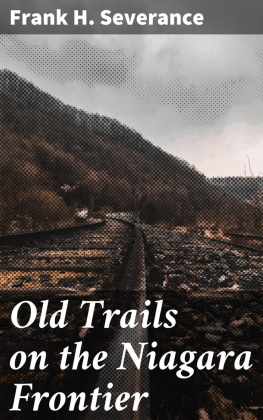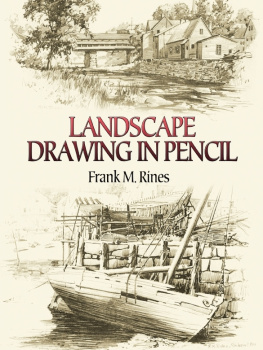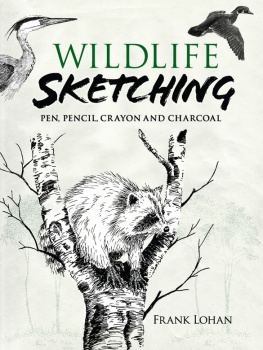Barakaldo Books 2020, all rights reserved. No part of this publication may be reproduced, stored in a retrieval system or transmitted by any means, electrical, mechanical or otherwise without the written permission of the copyright holder.
Publishers Note
Although in most cases we have retained the Authors original spelling and grammar to authentically reproduce the work of the Author and the original intent of such material, some additional notes and clarifications have been added for the modern readers benefit.
We have also made every effort to include all maps and illustrations of the original edition the limitations of formatting do not allow of including larger maps, we will upload as many of these maps as possible.
WITH PEN AND PENCIL ON THE FRONTIER IN 1851
THE DIARY AND SKETCHES
OF
FRANK BLACKWELL MAYER
EDITED BY BERHTA L. HEILBRON
TABLE OF CONTENTS
Contents
TABLE OF CONTENTS
REQUEST FROM THE PUBLISHER
Preface
TRANSITION was the characteristic mark of the upper Northwest in 1851, when Frank B. Mayer, a youthful American artist, journeyed from Baltimore to the Minnesota frontier, recording his experiences and observations in a diary and drawing hundreds of sketches of scenes and persons. Minnesota Territory, a two-year-old infant, was growing lustily; the pioneer trek into the upper Mississippi Valley was gaining force; and white men were pushing the natives toward the setting sun. In Mayers diary, here published with selections from his sketches, the reader is enabled to view this shifting mid-century scene through the eyes of a shrewd and talented contemporary observer.
The volume has a broad geographical sweep, for Mayer pictures in detail his journey from east to west. The goal of the sketching expedition was Minnesota, however, and both the diary and the sketches here reach the climax of their interest. Mayer portrays Indian life at Kaposia and he glances at old Fort Snelling, but his most memorable entries and sketches were made at Traverse des Sioux, crowded in the summer of 1851 with Indians, half-breeds, and whites. The drama of the day was the negotiation of an important land-cession treaty, but the artist had little concern for the details of treaty-making, He was intensely interested, however, in the Sioux and the half-breeds, their physique, their habits and customs, their traditions. He threw off his sketches rapidly, and his diary consists for the most part of notes jotted down with small attention to the niceties of spelling and punctuation. If the narrative lacks polish, it offers, as compensation, savor; freshness, authenticity.
This volume may be taken as an illustration of the purposes underlying the Narratives and Documents series that it inaugurates. The series will be employed as a vehicle for the publication of diaries, letters, newspaper items, and other historical materials of distinct Minnesota interest. Less formal and comprehensive than the Collections, the volumes selected for inclusion in this series will be brought out in attractive and popular, though inexpensive, form.
To the acknowledgments that the editor makes in her introduction, the society desires to add a word of hearty appreciation. It feels deeply indebted to all who, through their courtesies and assistance, have helped to bring the project to fruition.
THEODORE C. BLEGEN
MINNESOTA HISTORICAL SOCIETY
ST. PAUL
Illustrations
THE MINNESOTA VALLEY AT TRAVERSE DESSIOUX
THE TREATY OF TRAVERSE DES SIOUX
FRANK B. MAYER
THE MISSISSIPPI VALLEY FROM PILOT KNOB
SIOUX EVENING MEAL, TRAVERSE DES SIOUX
DRAGOONS, FORT SNELLING
DRAGOON EQUIPMENT, FORT SNELLING
A RED RIVER CART
WINTER DRESS OF A RED RIVER HALF-BREED
TRADERS CABIN, TRAVERSE DES SIOUX
A ROOM IN THE TRADERS CABIN, TRAVERSE DESSIOUX
BYRNEHAM WOOD, CLARK COUNTY, MISSOURI
BURIAL OF THE CHOLERA DEAD
MICHEL RENVILLE
HENRY BELLAND, VOYAGEUR
HOOSANEREE, OR GREY LEG
DR. WILLIAMSON
AN INDIAN SMOKING
SIOUX WINTER LODGE, OR TIPI
SIOUX SUMMER LODGE
KAPOSIA VILLAGE
CHIEF LITTLE CROW
HOOHAMAZA, OR IRON LEG
SIOUX CHILDREN, KAPOSIA
DEPARTING FOR A HUNT, KAPOSIA
AN INDIAN PIPE
ON THE MISSISSIPPI BETWEEN KAPOSIA AND ST. PAUL
INTERIOR OF PRESCOTTS HOUSE, FORT SNELLING
CAMP LIFE, TRAVERSE DES SIOUX
BALL-PLAYER
BALL-PLAYER
GOOD THUNDER IN THE COSTUME OF A BALLPLAYER
INDIAN APOLLO
BALL-PLAYER
A SKETCH OF MAYER BY ASHTON WHITE
COLONEL HENDERSON
ASHTON WHITE
NANCY MCCLURE
THE WEDDING OF NANCY MCCLURE AND DAVID FARIBAULT
SIBLEYS TENT AT TRAVERSE DES SIOUX
JAMES M. GOODHUE AT TRAVERSE DES SIOUX
THE THUNDER OR ROUND DANCE
CAMP AND GRAVEYARD, TRAVERSE DES SIOUX
SISSETON LODGES AT TRAVERSE DES SIOUX
BUFFALO DANCERS
BUFFALO DANCERS
Introduction
IN THE spring and early summer of 1851 the stage was being set in two-year-old Minnesota Territory for a tremendous drama, part of the great American epic of the retreat of the red man before the ever advancing wave of white settlement. This drama was to consist of three acts, which were to find their settings at three widely separated points in the vast frontier commonwealthTraverse des Sioux on the Minnesota River, Mendota at the junction of the Minnesota and Mississippi rivers, and Pembina on the Canadian border. Although Minnesota Territory, which stretched from the Mississippi, the St. Croix, and Lake Superior on the east to the Missouri on the west, was established in 1849, only a small triangle between the St. Croix and the Mississippi was at that time white mans land; two years later the rest of this great western empire was still in the hands of the Indians, Sioux and Chippewa. To extinguish the Indian title to much of the area, treaties were negotiated at the places mentioned above during the summer of 1851.
It is only with the first two acts of this Minnesota drama that the present volume is in any way connected. In these the red actors were Sioux Indiansmembers of the Sisseton and Wahpeton bands living in the Minnesota Valley, who met to treat at Traverse des Sioux, and of the Wahpekute and Mdewakanton bands of the Mississippi Valley, who gathered at Mendota. Chief among the white actors were the commissioners appointed by the president to negotiate the treatiesAlexander Ramsey, governor of Minnesota Territory, and Luke Lea of Mississippi, United States commissioner of Indian affairs. Indians by the thousands assembled for the treaties; probably there were not a hundred white men present at either. Yet by the terms of the agreements that were drawn up and signed at Traverse des Sioux and Mendota, much of what is now southern Minnesota and vast tracts of land in Iowa and Dakotaan area estimated at thirty-five million acresbecame part of the white mans domain. {1}
Among those who were attracted to Minnesota in 1851 by news of the forthcoming treaties was a young artist of Baltimore, Frank Blackwell Mayer. He went, not to participate in the negotiations, but to observe Indian life at first hand and to find subjects for his brush and pencil. It may be that he hoped to become a second Catlin or to follow in the footsteps of Charles Bodmer or Seth Eastman. He had long felt that in his choice of subjects for illustration an artist should select those peculiarly illustrative of the history of his own country. {2} Where could one find distinctly American subjects better than among the red men of the West, who had not yet dropped their primitive mode of life? And how could one get in touch with the native Americans better than as a member of a government expedition? Such an expedition would afford protection and congenial companionship in regions that could not be reached conveniently by the independent traveler. As early as November 1, 1848, Mayer visited Washington to obtain an appointment as official artist to one of the government expeditions that were being sent into the West to explore new regions, establish forts, make surveys, or treat with the Indians. Interviews with a number of influential men and an application filed with the office of the Topographical bureau failed to bring the desired appointment; positions as artists to western expeditions were not plentiful. When, in the early months of 1851, Mayer heard of the forthcoming Minnesota treaties, he hurried to Washington to apply for any position that might be open in connection with their negotiation. Once more he was disappointedhe was informed that all the positions had been filled. It was then that he wrote in his journal: I have determined to undertake the trip at my own expense as the intercourse with the Indians and others, & the sketches I shall make will amply repay me for any expenditure I shall make. While at Washington, Mayer was introduced to Captain Seth Eastmana fortunate meeting, for this artist of Indian life had served earlier as commandant at Fort Snelling, and he was able to give his youthful colleague much information and advice about travel in the West and to furnish him with many useful letters. {3} Later, on May 2, Mayer met Governor Ramsey in Washington, and that meeting resulted in a life-long friendship. {4} During the journey to the West that followed his visits to Washington, Mayer recorded his impressions with pen and pencil in a series of sketchbooks and a diary. With a sure stroke he pictured the scenes and inhabitantsred and whiteof the frontier; with a fluent pen he described all that he saw through the sensitive eye of the artist. Perhaps no other observer, with the exception of Catlin, has left so interesting a record in two mediums of the Indian life of the Middle West. Mayers diary, illustrated with selections from his drawings, forms the substance of the present volume.















